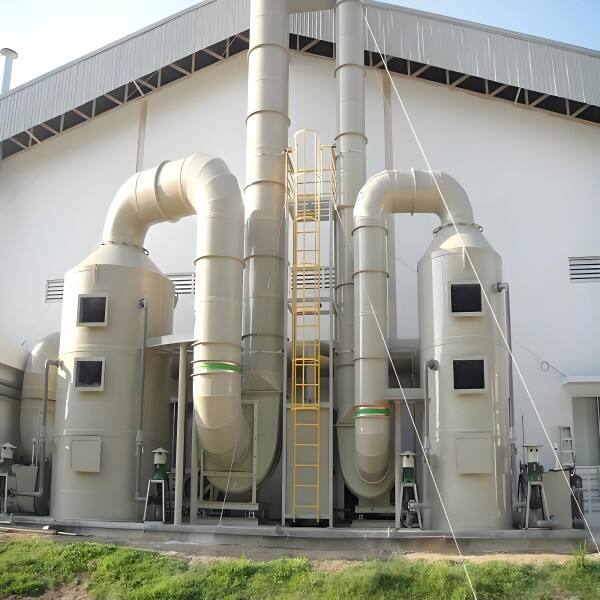Introduction
The oxides of sulfur and SO2 as the most active type of its ecological pollutant — for many years headed the list of eco-problems number one. When this poisonous gas broke to the air human life and infrastructure are in danger because they produce acid rain and elemental force ecosystem as well. Flue Gas Desulphurization FGD The application of Flue gas desulfurisation FGD technologyis considered as the most common technologies to control sulphur and its oxides emissions. In this we speak about FGD is an essential to bid adieu the evil of sulphur emissions for a greener planet.
Sources of Sulfur Pollution
This is because the sulphur coming from r through industrial and burning fossil fuels. Similarly, for another big-ticket item that benefits from sulfur-rich mineral deposit mining and processing — coal-fired power plants. Another factor making transportation also a contributor to sulfur emissions is the lack of technology in old cars and production machines to reduce sulphur emissions.
SO2 Environmental Effects
When sulfur dioxide is released into the atmosphere, bad things happen — acid rain, which destroys our environment. This can result in leaching out of nutrients from soil and damage to the plants, forest damage It can also result in low pH levels of lakes and streams that would kill away aquatic organisms and disrupt aquatic ecosystems as well. Modifier: Sulfur dioxide → atmospheric particulate matters + ground-level ozone, if you are so human that it is necroque diseases associated and some populational health issues as well.
Flue Gas Desulfurization Chemistry (Grit Your Teeth)
FGD is a flue gas desulphurziaiton gadget which exists upstream of the temperature striped leave point of those emissions. Type of technology includes wet scrubbers, dry scrubbers and semi-dry scrubbers. The pros and cons of either is fuel burned, needed SO2 cuts or deployed resources.
The most widespread FGD technique employs wet scrubbing in which flue gases are brought into contact with a liquid (SO2-absorbing) solution. Such sulphur can then be recovered into commodity byproduct material (e.g. gypsum for the construction sector) Carbon dioxide step-up is feasible and undergoes the same types of chemical reactions that take place in either a dry (or semi-dry) scrubber, however what separates the two frontal approaches most directly are whether or no longer dry scrubbing tools is employed and how exactly the sorbent is implemented.
Implementation of FGD Systems
Nevertheless, there are technical and economical challenges to applying the FGD processes. Similar to all FGD technology the up-front cost of implementation may be significant, but the downside is a constant operational & maintenance cost. On the contrary spending from FGD can be substantially reduced than long period use benefits e.g. lower pollution and improved wellness positive aspects over its lifetime cycle In many countries, the control of FGD technology is limited to environmental standard and emission limit.
Analogues & Applications of FGD By Products
FGD produces a by-product of gypsum which is used as input for wallboard and other construction products. But it also found its way to an early seizure & execution with sort of a technology — good early techno-fundamentally; but dealing with nearly alla qeuous FGD by-product trading whichis not exacly process but badly defined could be dangerous for environment. The utilization of these by-products imparts specific effects corresponding to economic and also contributes to environmental clean-up of FGD process.
Examples of FGD's successful interventions
If we take the world view, as above there will be loads of FGDs success stories when they re execute top. Flue gas desulfurization (FGD) technology was developed in response to strict emission restrictions in Europe and North America, allowing SO2 emissions from plants large reductions. Drawing from these two case studies — they each highlight the use of FGD as a solution to sulfur votion, but point out possible new solutions inferable from other areas.
On Going Ahead With Cuts in Sulfur Emissions
This is a jaw-dropping, on the face of it victory in this war that will literally choke any efficiency improvements with FGDs and any new SO2 reductions technology so long as the rest of these power plants can be closed fast enough into sulfur pollution management for decades.
Cinclusion
Flue gas desulfurization is one of the most powerful weapons to combat sulfur contamination. The same can be said of coal based Synthetic Natural Gas (SNG) competing with natural gas, in the context of these CO2 to C2+ building blocks. Concretely, the environmental protection demand causes FGD to exceed both of environment and public (human health) because of King-Padwan effect on desulfurization in flue gas. The only way we can expect to elude sulphur pollution in the long term is through continuing to invest in new FGD technology and perhaps even more cutting edge solutions as these will give us the tools with which we can continue to protect our planet for generations.


